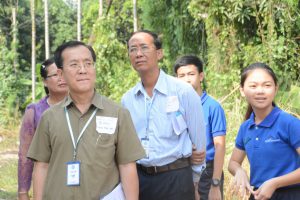In physics class, we got to choose a superhero and do research about them, specifically the physics/biology behind their super powers. I chose Violet Parr from the Incredible and below is my paper:
Violet Parr, also known as Vi to her family and friends or the oldest and only daughter of Bob and Helen Parr (Mr. and Mrs. Incredibles) from the Incredibles. She was depicted as the gloomy and shy teenager that would always hide with her long black hair and her invisibility.
To be able to be invisible, light needs to bend around the object so that it doesn’t emit shadows and it has to be able to not create any reflection. In order to do bend light, Violet’s body needs to have a negative refractive index. Refractive index is how refractive a wave is; refraction is when waves (light or sound..) go from one medium to another which makes it change both in speed and direction. Glass, for example, is a very low refractive substance because everything we see through it, is the same. So, when an object is has a negative refraction index, it refracts the light so much that it changes its directions and angles in many places to go around the object making it the object invisible because light doesn’t hit it. In the movie, violet gets to go invisible whenever she wants, like, when she didn’t want her crush to see her looking but we are still clueless on how does she control the power.
Another thing Violet is able to do is creating force field, an invisible protection bubble usually seen in science fictional movies. There are four foundational forces or interactions: gravitational force, electromagnetic force, the weak interaction, and the strong interaction. The only force that will be closest to being able to create force fields is electromagnetic. Although electromagnetic force absorb things, but matters like rubber can’t be absorbed by this force. Super strong electromagnetic force or bond could create plasma, the “fourth matter”. Plasma is gas heated in extreme temperature; this is very rare on earth (ex. Lightning strikes), but it can be found the galaxy, like, stars and the sun. Then, really strong plasma bond (connected to each other) could potentially make a forcefield. In order to do this, I think, Violet’s body needs a lot of energy, so much that it’s not possible for typical human beings because it might burn us, to create plasma.
In conclusion, these powers are possible but not exact in our real world. For example, the idea of creating force fields only has plasma that being the closest thing to it. If it was written, obviously it would be easier because our minds can imagine things that are not possible in the real world. Though the movies might adjust to what looks good and more logical.
Resources:
http://disney.wikia.com/wiki/Violet_Parr
https://www.technologyreview.com/s/407677/how-to-make-an-object-invisible/
http://www.physics.org/article-questions.asp?id=69
https://www.youtube.com/watch?v=5mbJPRafYI0
http://bigthink.com/Mind-Matters/shields-up-practical-force-fields-are-in-the-works













